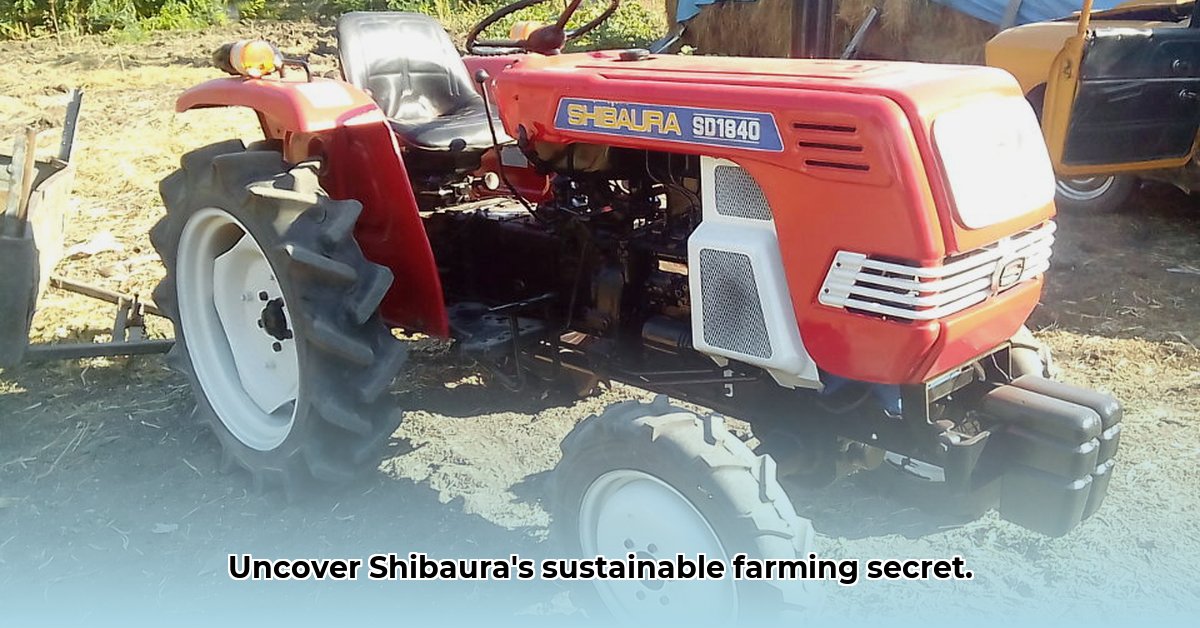
For decades, Shibaura tractors have quietly served farmers worldwide, often as original equipment manufacturers (OEMs) for prominent brands like Case IH and New Holland. While lacking widespread recognition, their contribution to sustainable agriculture warrants closer examination. For more on OEM tractor history, see this Case Tractor History. This article explores Shibaura's history, its focus on lower-horsepower models, and the potential implications for sustainable farming practices, while acknowledging the crucial need for further research.
The History of Shibaura and its Compact Tractors
Shibaura's roots trace back to Ishikawajima Machinery, established in 1950. Initially concentrating on diesel engines, this foundation proved instrumental in their subsequent foray into tractor manufacturing, predominantly focusing on lower-horsepower models—typically under 50 horsepower. This emphasis on compact tractors is key to understanding their potential significance in the context of sustainable agriculture. The prevalence of these smaller machines hints at a possible, yet unquantified, contribution to environmentally friendly farming methods. However, detailed production volume data across the years remains elusive, hindering a comprehensive historical analysis.
The Sustainable Agriculture Connection: Potential and Limitations
Shibaura's specialization in compact tractors aligns with several aspects of sustainable agriculture. Smaller farms, often characterized by diverse crop production and reduced environmental impact due to less land use, are ideally suited to these machines. The inherent fuel efficiency potential of lower-horsepower models presents further advantages, potentially reducing greenhouse gas emissions and operational costs. However, without concrete data on fuel efficiency, emissions rates, and lifecycle assessments (LCAs), claims about their environmental performance remain speculative, underscoring the importance of future research. Such analysis is crucial to determine the actual environmental impact compared to larger, higher-horsepower tractors.
Data Gaps and the Need for Further Research
A primary challenge in assessing Shibaura's contribution to sustainable agriculture is the current scarcity of comprehensive data. Quantifiable metrics on fuel efficiency, greenhouse gas emissions, and overall lifecycle assessments are lacking. This limits the ability to make definitive statements regarding their environmental impact. Access to technical specifications, sales data, and detailed production records is crucial for providing a rigorous assessment. What are the actual operational costs and fuel consumption numbers across various models and farming contexts? This information is vital to provide context.
Collaborative Research: A Multifaceted Approach
Addressing the current data limitations requires a collaborative effort involving multiple stakeholders:
Agricultural historians: Digitization of archives, interviews with former employees, and analysis of existing literature can provide crucial historical context and quantify the market impact of Shibaura's designs and choices.
Machinery manufacturers (including Shibaura): The companies possess invaluable insights into production processes, design choices, and potential for sustainable manufacturing practices, including remanufacturing and recycling programs.
Environmental agencies: Conducting robust lifecycle assessments (LCAs) of representative Shibaura tractor models can generate the necessary quantitative data on overall environmental impact, including material use, energy consumption, and end-of-life management.
Farmers and agricultural researchers: Field studies comparing Shibaura tractors with other models can provide real-world data on fuel efficiency, soil health, and overall economic and environmental performance under various farming conditions.
Future Implications and Actionable Intelligence
The potential insights from this research extend beyond academic interest. Understanding Shibaura's role could influence future agricultural equipment design, inform environmentally conscious policy, and benefit farmers seeking sustainable and cost-effective farming practices. This detailed analysis provides a blueprint for future research, empowering stakeholders to make informed decisions regarding agricultural machinery and sustainability. The potential environmental benefits associated with compact tractors warrant thorough investigation.
Conclusion: A Hidden Legacy Waiting to be Revealed
While the extent of Shibaura's contribution to sustainable agriculture remains unquantified, the inherent characteristics of their compact tractors suggest a potentially significant yet unmeasured impact. The lack of comprehensive data underscores the urgent need for collaborative research to fully assess their role. This investigation is not just about tractors; it's about understanding how technological choices can contribute to a more sustainable agricultural future. Only through detailed research can we fully uncover this hidden legacy.